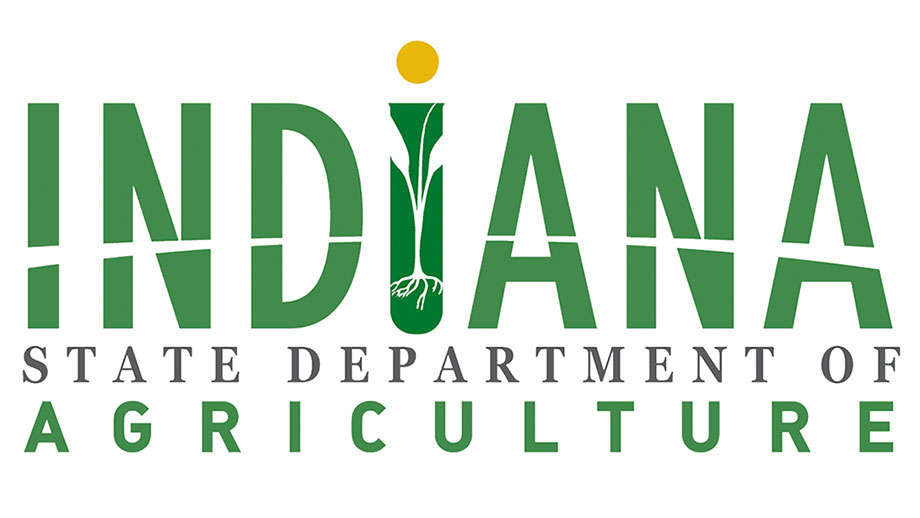
Bi-weekly Purdue Extension hosts a Field Crop Update for Extension Educators and Specialists.
These updates are usually shared online via the Purdue on the Farm and/or the Purdue Extension – Putnam County Facebook pages for producers to listen to. The most recent update took place on July 1st and discussed the various stages of growth producers are seeing in fields this summer and diseases. It was mentioned that some of the soybean plants may be short with blooms rather close to the ground. At the same time, we may have plants that are closer to normal height.
There was also some discussion about sidewall compaction. It can be caused by planting into wet soil, too much down pressure from the plant, or seeds planted too shallow. You can identify sidewall compaction by scouting early for non-uniform emergence, stunted plant growth, nutrient deficiency symptoms (from shallow root systems), smooth/shiny surfaces in furrow, open seed furrows, and poor seed-to-soil contact. Not much can be done after planting to correct sidewall compaction, but it is a nice reminder to take preventative steps in the future. Those steps could include waiting an extra day or two if needed to get the optimal soil moisture, adjusting down pressure on row-units, reducing closing wheel down force, avoiding shallow plantings, and using a spiked closing wheel. Ultimately, prevention is key when it comes to sidewall compaction!
Additionally, there were a number of resources that were shared including the Crop Lookout found on the Crop Protection Network (https://cropprotectionnetwork.org/crop-lookout). This interactive map provides updates throughout the growing season by university Extension specialists and research partners. Individuals can see where soybean rust, corn leafhopper, southern rust, and tar spot are found throughout the nation. Locally, Montgomery County has 1 incident of tar spot of corn reported.
The Crop Protection Network has several great tools for producers to utilize. Including a yield loss calculator, severity estimation tool, fungicide return on investment calculator, fungicide efficacy tool, and a crop diseases forecasting tool. The crop disease foresting tool provides weather-based forecasting and risk assessments for various crop diseases to help farmers, crop advisors, and agricultural researchers to make decisions.
To help advance field crop research, Darcy Telenko, Associate Professor of Botany & Plant Pathology, is asking producers for help in tracking diseases in corn and soybeans. She is looking to track all corn and soybean disease in Indiana – including tar spot, southern rust, frogeye, red crown rot, and others. If you suspect your plants are inflected with one (or more) of these diseases, send a sample to the Purdue Plant Pest Diagnostic Lab for free! You can submit the sample using the standard submission form (https://ag.purdue.edu/department/btny/ppdl/submit-samples/physical-submission.html). Please put Telenko on the form when you submit it to ensure you are not charged. Checkoff funding from Indiana Corn Marketing Council and Indiana Soybean Alliance has been provided to cover sample processing costs.
Visit our homepage at www.extension.purdue.edu/putnam or you can contact the local Purdue Extension Office by calling 765.653.8411 for more information regarding this week’s column topic or to RSVP for upcoming events. It is always best to call first to assure items are ready when you arrive and to RSVP for programs. While many publications are free, some do have a fee. Purdue University is an equal access/equal opportunity institution. All times listed are Eastern Time.
Upcoming Events:
July 18-25 – Putnam County 4-H Fair
Aug. 1-17 – Indiana State Fair (closed Mondays)
Aug. 6 – Pressure Gauge Testing, 2-6:30 pm, $5 per canner, Extension Office, schedule your 20-minute appointment at https://tinyurl.com/cantest25


 Main Street Greencastle announces Business Development Grant recipients
Main Street Greencastle announces Business Development Grant recipients
 Governor Braun takes action to waive hours-of-service regulations for transporting propane
Governor Braun takes action to waive hours-of-service regulations for transporting propane
 Merger finalized between Union Health and Terre Haute Regional Hospital
Merger finalized between Union Health and Terre Haute Regional Hospital
 Two Indiana State Fair Commission executives elected to prominent national IAFE Positions, Indiana State Fair honored with multiple awards
Two Indiana State Fair Commission executives elected to prominent national IAFE Positions, Indiana State Fair honored with multiple awards
 Indiana 4-H Junior Leaders and their commitment to community service during the holiday season
Indiana 4-H Junior Leaders and their commitment to community service during the holiday season
 Cover Crop Premium Discount Program available for Hoosier farmers, new pre-enrollment available
Cover Crop Premium Discount Program available for Hoosier farmers, new pre-enrollment available
 Indiana FSSA extends open enrollment for HIP and PathWays Plans through December 24
Indiana FSSA extends open enrollment for HIP and PathWays Plans through December 24
 Available housing inventory continues to climb in November in central Indiana
Available housing inventory continues to climb in November in central Indiana




